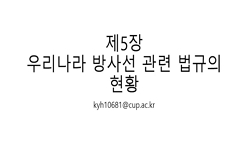In veterinary medicine, most radiographic images are obtained by restraining patients, inevitably exposing the restrainer to secondary scattered radiation. Radiation exposure can result in stochastic reactions such as cancer and genetic effects, as we...
http://chineseinput.net/에서 pinyin(병음)방식으로 중국어를 변환할 수 있습니다.
변환된 중국어를 복사하여 사용하시면 됩니다.
- 中文 을 입력하시려면 zhongwen을 입력하시고 space를누르시면됩니다.
- 北京 을 입력하시려면 beijing을 입력하시고 space를 누르시면 됩니다.
https://www.riss.kr/link?id=A109026651
-
저자
Songyi Kim (Chungbuk National University) ; Minju Lee (Chungbuk National University) ; Miju Oh (Chungbuk National University) ; Yooyoung Lee (Chungbuk National University) ; Jiyoung Ban (Chungbuk National University) ; Jiwoon Park (Chungbuk National University) ; Sojin Kim (Chungbuk National University) ; Uhjin Kim (Chungbuk National University) ; Jaepung Han (Chungbuk National University) ; Dongwoo Chang
- 발행기관
- 학술지명
- 권호사항
-
발행연도
2023
-
작성언어
English
- 주제어
-
등재정보
SCOPUS,KCI등재
-
자료형태
학술저널
- 발행기관 URL
-
수록면
429-437(9쪽)
- 제공처
-
0
상세조회 -
0
다운로드
부가정보
다국어 초록 (Multilingual Abstract)
In veterinary medicine, most radiographic images are obtained by restraining patients, inevitably exposing the restrainer to secondary scattered radiation. Radiation exposure can result in stochastic reactions such as cancer and genetic effects, as well as deterministic reactions such as skin burns, cataracts, and bone marrow suppression. Radiation-shielding equipment, including aprons, thyroid shields, eyewear, and gloves, can reduce radiation exposure. However, the risk of radiation exposure to the upper arms, face, and back remains, and lead aprons and thyroid shields are heavy, restricting movement. We designed a new radiation-shielding system and compared its shielding ability with those of conventional radiation-shielding systems. We hypothesized that the new shielding system would have a wider radiation-shielding range and similar shielding ability. The radiation exposure dose differed significantly between the conventional and new shielding systems in the forehead, chin, and bilateral upper arm areas (p < 0.001). When both systems were used together, the radiation-shielding ability was better than when only one system was used at all anatomical locations (p < 0.01). This study suggests that the new radiation-shielding system is essential and convenient for veterinary radiation workers because it is a step closer to radiation safety in veterinary radiography.
동일학술지(권/호) 다른 논문
-
- The Korean Society of Veterinary Clinics
- Ga-Won Lee
- 2023
- SCOPUS,KCI등재
-
- The Korean Society of Veterinary Clinics
- Hyun-Min Kang
- 2023
- SCOPUS,KCI등재
-
- The Korean Society of Veterinary Clinics
- Sung Jae Kim
- 2023
- SCOPUS,KCI등재
-
A Pilot Study on the Heart Rates of Jeju Horses during Race Trials
- The Korean Society of Veterinary Clinics
- Seung-Ho Ryu
- 2023
- SCOPUS,KCI등재






 ScienceON
ScienceON






